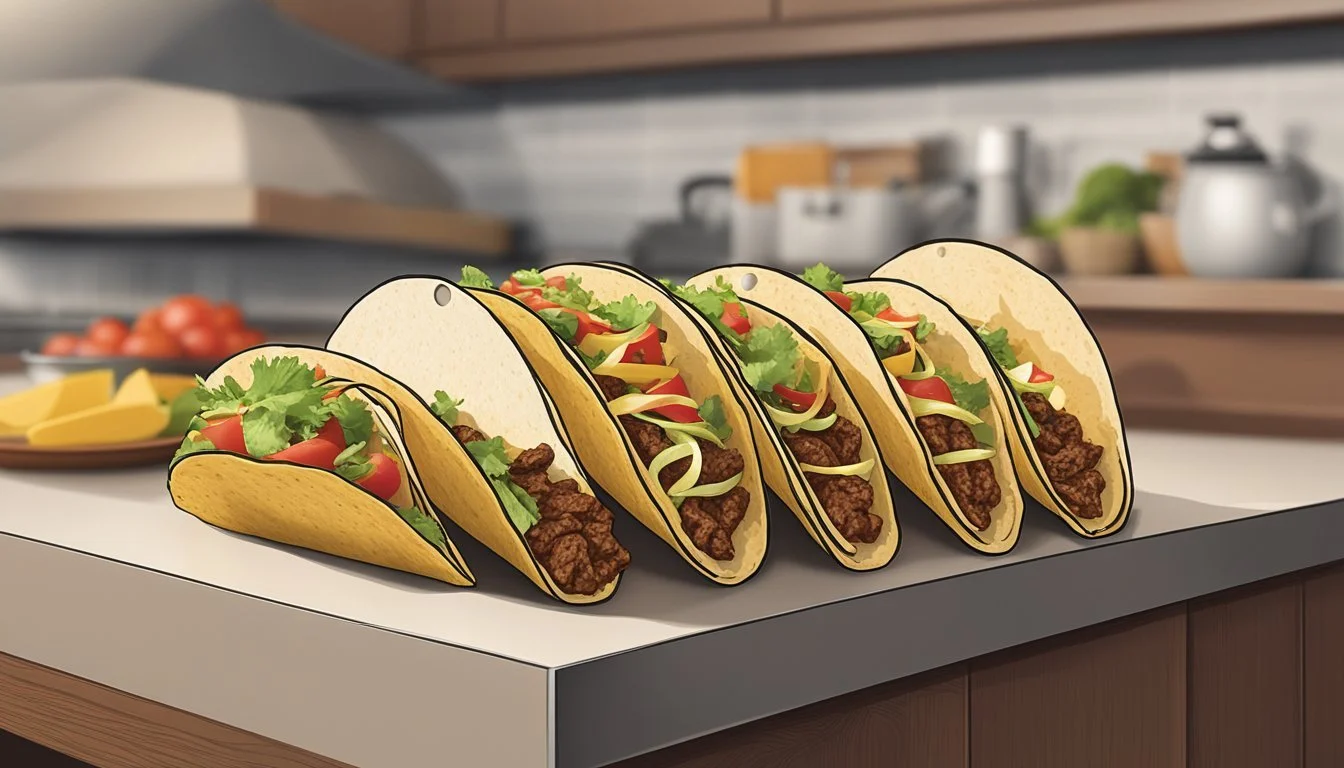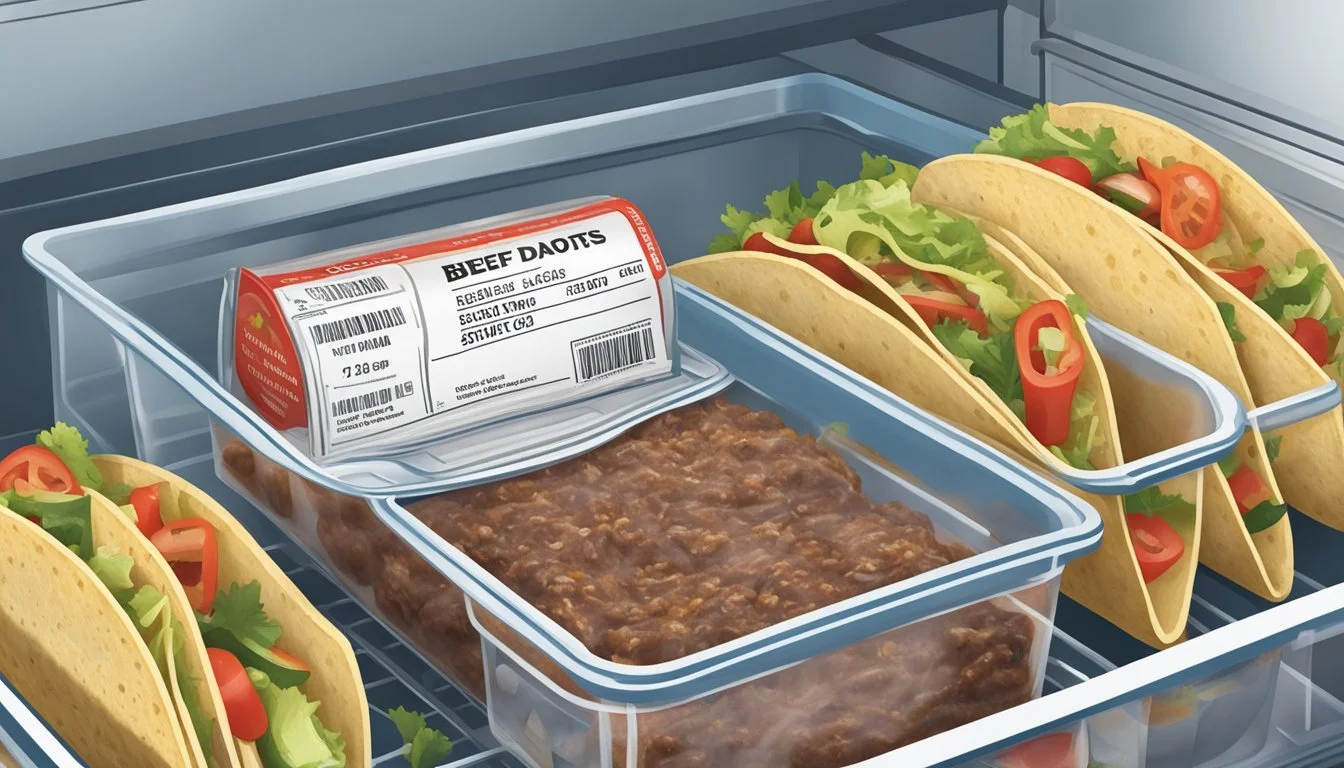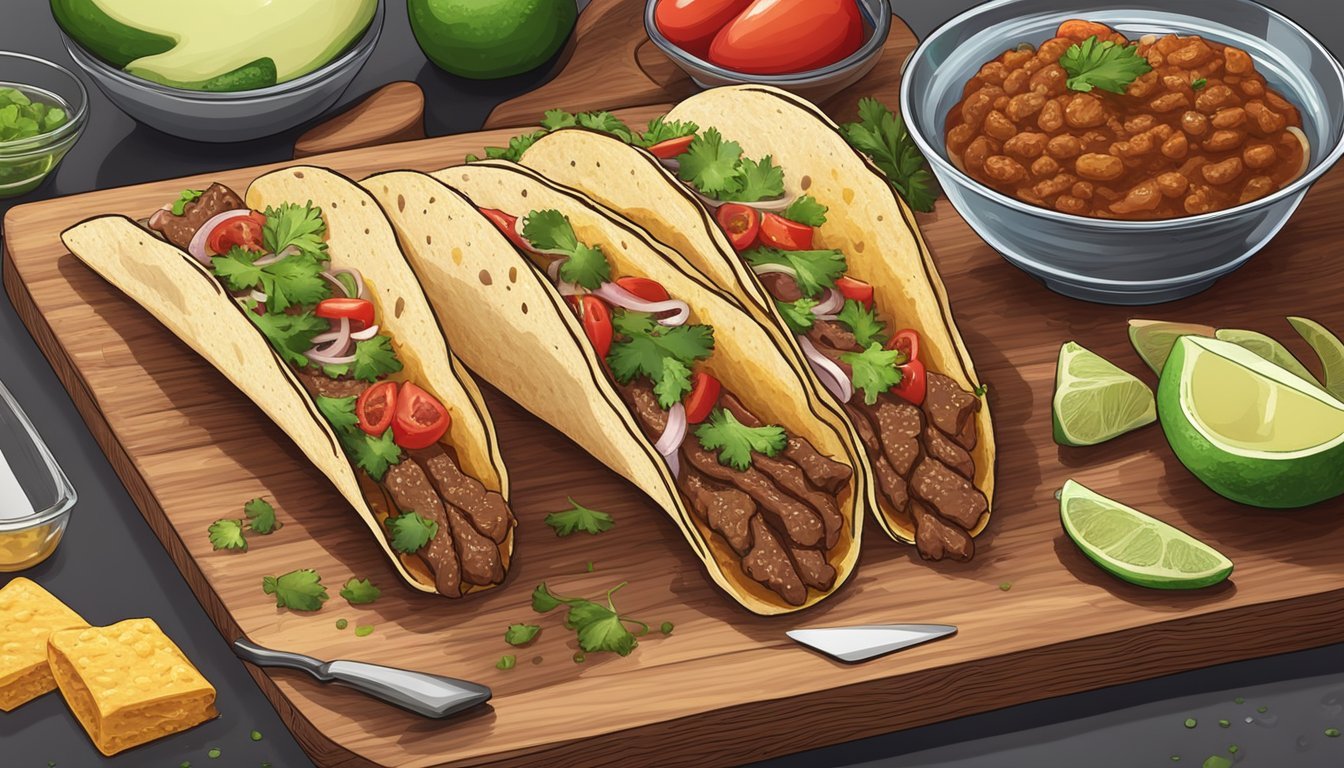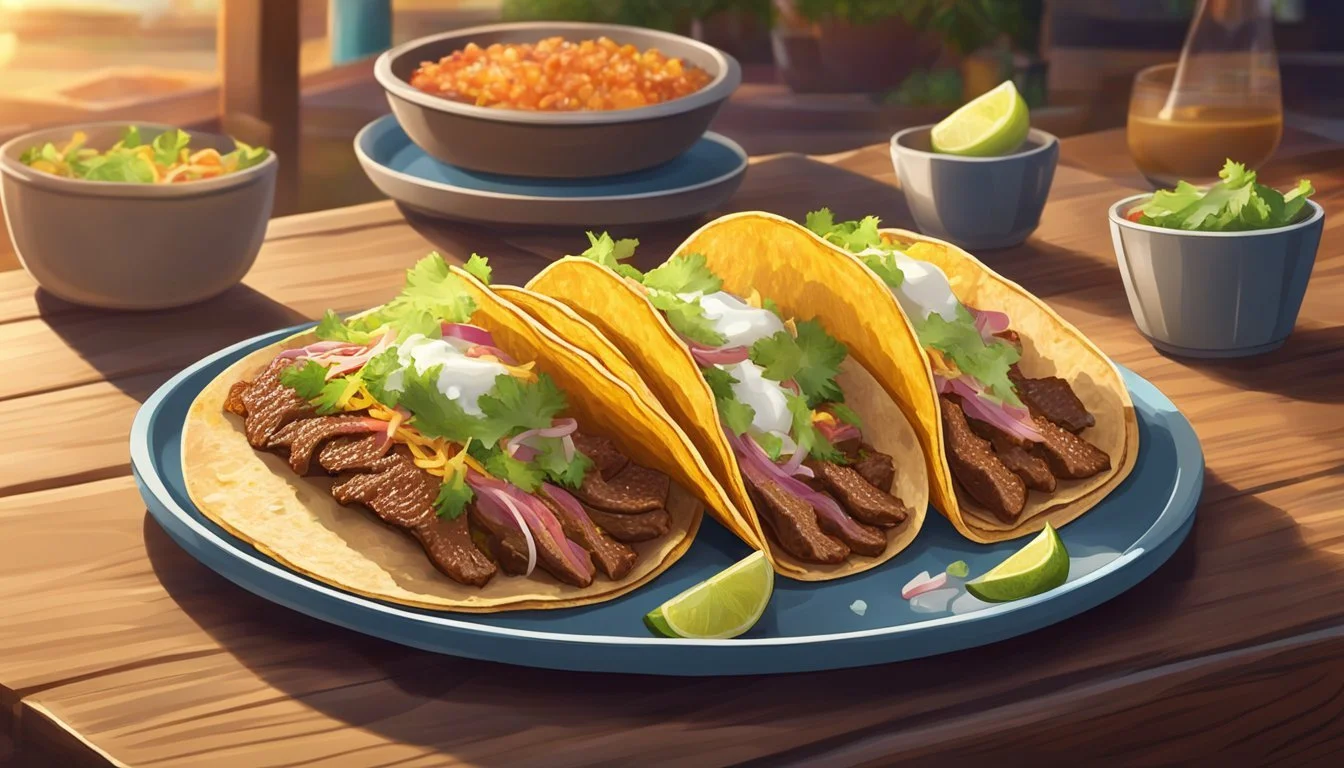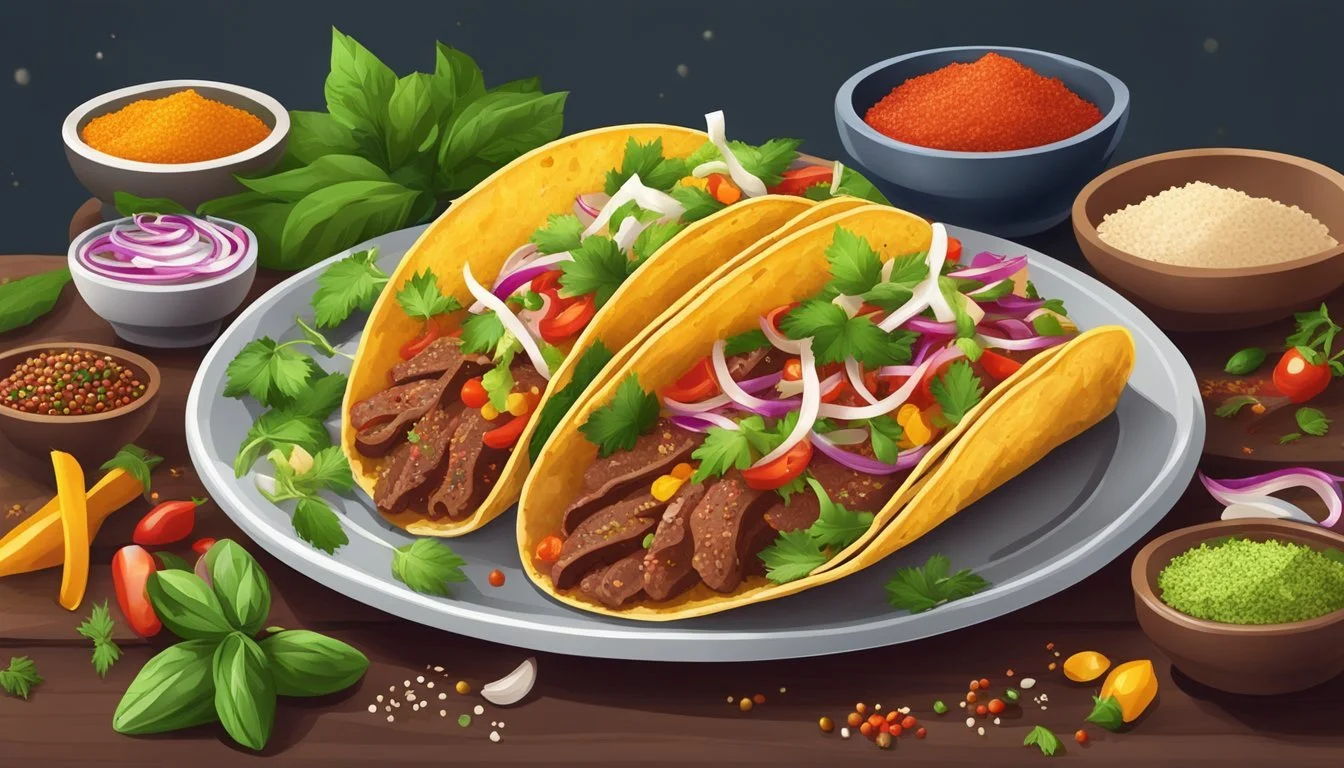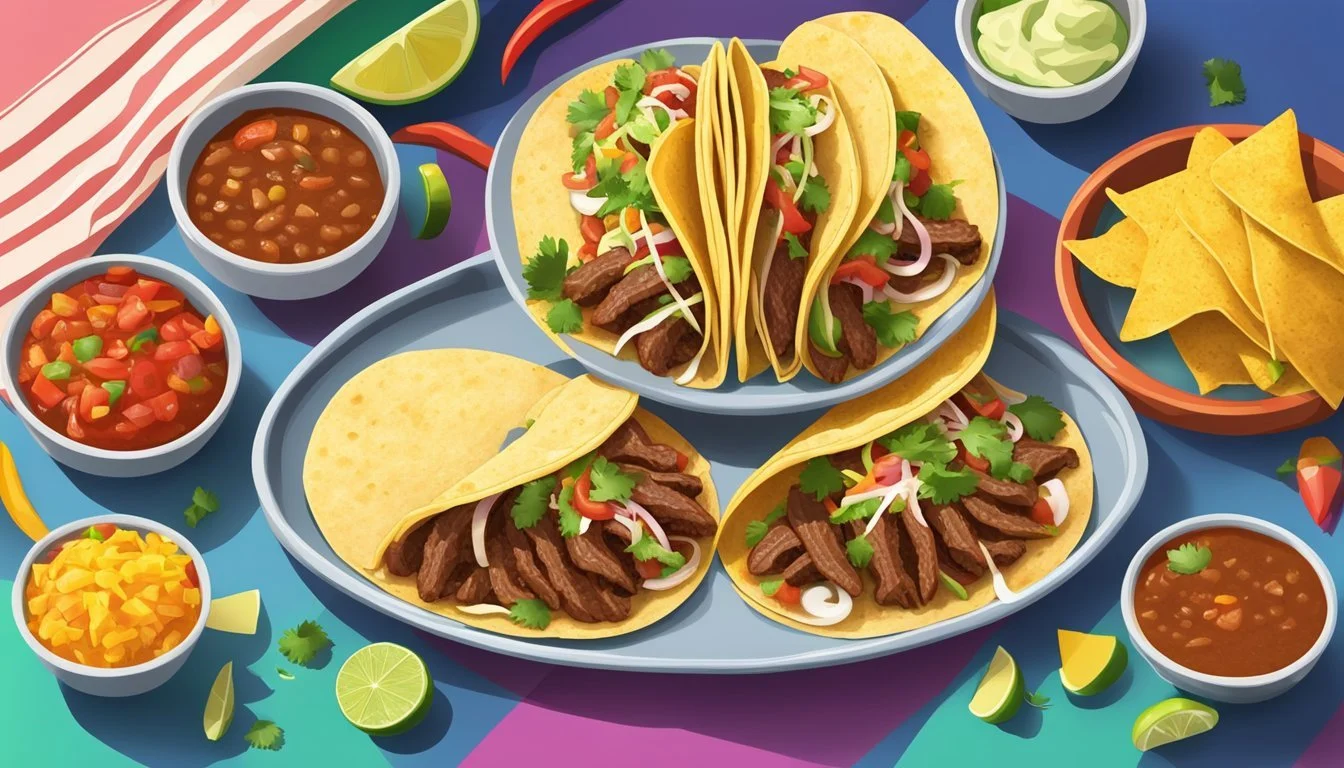How Long Do Beef Tacos Last?
A Guide to Shelf Life and Storage
When craving a delicious and satisfying meal, beef tacos often come to mind. Whether they're made for a family dinner or a casual get-together, knowing how long these mouth-watering treats can be safely stored is essential. In the refrigerator, cooked beef tacos can last between 3 to 5 days if stored in an airtight container.
The storage method plays a crucial role in preserving the flavor and safety of your beef tacos. While refrigeration is key for short-term storage, freezing them can extend their shelf life up to 2-3 months, maintaining their taste and quality. However, once thawed, they should be consumed within a few days to ensure they remain a delightful dish.
Making a large batch of beef tacos can be convenient, but ensuring they are kept fresh is vital to avoid waste and enjoy them later. By adhering to proper storage guidelines and understanding the timelines, you can relish your beef tacos safely and deliciously for days to come.
Understanding Taco Components
The components of a taco significantly affect its flavor, texture, and quality. Each element, from the meat to the toppings, plays a crucial role in the overall taste and enjoyment of the dish.
Beef and Other Meats
Beef, especially ground beef, is the traditional meat used in tacos. It is typically seasoned with a blend of spices to enhance its flavor. Chicken and turkey are popular alternatives, each bringing a slightly different taste and texture.
Ground turkey offers a leaner option, while ground chicken provides a milder flavor compared to beef. For optimal freshness and safety, cooked meats should be stored in the refrigerator and consumed within 3-4 days.
Taco Shells and Tortillas
Taco shells and tortillas are the vessels that hold the delicious contents of a taco. Corn tortillas are a staple in traditional tacos and deliver a distinct flavor and texture. Flour tortillas are also widely used and provide a softer, more pliable option.
Taco shells, often made from corn, should be crisp and not overly oily. Freshness is key, and both tortillas and taco shells should be stored in airtight containers to maintain their quality and prevent staleness.
Vegetables and Toppings
Vegetables and toppings add freshness and complexity to tacos. Common toppings include diced tomatoes, onions, shredded lettuce, and avocados. Each provides a unique texture and flavor that complements the seasoned meat.
Onions add a sharp bite, while tomatoes bring juiciness. Avocados, especially when made into guacamole, add creaminess, and shredded lettuce gives a crunchy texture. These items should be fresh and added just before serving to retain their quality.
Dairy and Fresh Condiments
Dairy products like cheese and sour cream enhance the richness of tacos. Shredded cheese, such as cheddar or Mexican blends, melts slightly when placed on hot meat, adding a creamy texture. Sour cream offers a tangy contrast that balances the spiciness of the meat.
Fresh condiments, including guacamole and salsa, elevate the taco's flavor profile. Guacamole, made from mashed avocados, adds a rich, smooth layer, while salsa introduces a bright, sharp flavor. Both should be kept chilled and used within a couple of days to ensure maximum quality.
Proper Storage Methods
Beef tacos can remain safe and tasty if stored correctly. This includes refrigeration, freezing, and using airtight containers to prevent spoilage and maintain quality.
Refrigeration Techniques
Storing beef tacos in the refrigerator effectively keeps them fresh for a short duration. After cooking, allow the taco meat to cool to room temperature within two hours.
Place the meat in an airtight container to limit exposure to air and moisture. Store the container in the back of the fridge where temperatures are more consistent. Set the fridge temperature to 40°F (4°C) or below.
According to the USDA, cooked beef taco meat can be safely stored in the fridge for three to four days. Proper refrigeration methods ensure that the meat stays safe to consume and reduces the risk of bacterial growth.
Freezing for Longevity
Freezing beef taco meat extends its shelf life significantly. Begin by allowing the cooked meat to cool completely. Transfer it to a freezer-safe airtight container or heavy-duty freezer bag.
Label the container with the freezing date to track its storage period. Store the meat at 0°F (-18°C) or lower.
Frozen beef taco meat can last up to two months without a noticeable decline in quality. Thawing should be done in the refrigerator to maintain texture and flavor. Avoid thawing at room temperature to prevent bacterial growth and ensure food safety.
Airtight Containers and Preservation
Using airtight containers is crucial for both refrigeration and freezing. These containers prevent air and moisture from affecting the taco meat.
For refrigeration, opt for containers made of glass or BPA-free plastic with sealed lids. For freezing, heavy-duty freezer bags are ideal due to their flexibility and minimal space usage in the freezer.
When storing the beef taco meat, ensure it is packed tightly to eliminate air pockets. This helps in maintaining freshness and prevents freezer burn. Proper labeling with storage dates aids in tracking how long the meat has been stored, ensuring it remains within safe consumption periods.
Shelf Life and Expiration
Beef tacos, whether fresh or leftover, have specific shelf lives depending on their storage method. This section discusses how long they last in a refrigerator, freezing time frames, and indicators of spoilage.
Refrigerator Shelf Life
Cooked beef taco meat stored in the refrigerator generally lasts for 3-4 days. It's important to store it in an airtight container to prevent moisture and contaminants from compromising the meat. Leftover taco meat should be refrigerated as soon as possible, ideally within two hours of cooking to minimize bacterial growth.
During refrigeration, the meat's quality remains high, but the potential for spoilage increases with time. It's crucial to keep the temperature consistently at or below 40°F (4°C) to ensure safety. Foodborne illnesses can develop if these guidelines aren't followed closely.
Freezing Time Frames
Freezing beef taco meat can significantly extend its shelf life. Properly frozen taco meat can last 4-6 months in the freezer. Before placing it in the freezer, make sure the meat is cooled and stored in airtight containers or heavy-duty freezer bags to maintain quality and prevent freezer burn.
Labeling each package with the freezing date can help manage the rotation and usage of frozen taco meat. To retain the best flavor and texture, thaw frozen meat in the refrigerator overnight before reheating.
Signs of Spoilage
Identifying spoilage is crucial to avoid consuming bad taco meat. Some signs of spoilage include unusual odors, discoloration, and slimy textures. Moldy spots on the meat indicate it's no longer safe to eat and should be discarded immediately.
Checking for a sour or rancid smell is another key indicator of spoilage. If the leftover meat has an off-putting scent, it should not be consumed to prevent foodborne illnesses. Always err on the side of caution when uncertain about the freshness of beef taco meat.
Health and Safety Considerations
Ensuring that beef taco meat is stored and reheated properly is crucial to prevent foodborne illnesses. Key points include proper refrigeration, reheating methods, and safe serving practices.
Preventing Foodborne Illness
To minimize the risk of foodborne illness, beef taco meat should be refrigerated within two hours of cooking. The USDA recommends storing cooked taco meat in an airtight container at 40°F or lower. Refrigeration time should not exceed 3-4 days to maintain safety and quality.
Leaving taco meat at room temperature for over two hours increases the risk of bacterial growth, which can lead to food poisoning. It's crucial to note that meat left at this temperature should be discarded to ensure safety.
Additionally, freezing can extend the shelf life of taco meat up to two to three months if stored at 0°F or below. Proper labeling with dates can help keep track of storage times.
Reheating and Serving Safely
Reheating taco meat should be approached with caution. When using a microwave, ensure the meat is heated to an internal temperature of 165°F. Stirring the meat periodically can help redistribute heat evenly, reducing cold spots where bacteria can thrive.
An alternative method is reheating on the stove. This allows for more even heating and better control over temperature. When serving, keep the meat hot (above 140°F) to maintain safety.
Using a food thermometer can ensure accurate temperature readings. It is also recommended to avoid reheating taco meat more than once as repeated heating and cooling cycles can increase the risk of foodborne illnesses.
Beef taco meat, when handled and stored correctly, can be a safe and nutritious part of any meal. Proper practices ensure both safety and enjoyment.
Enhancing Flavor and Quality
To enhance the flavor and quality of beef tacos, it is essential to focus on the right seasonings and spices, the freshness of the ingredients, and exploring various recipes and variations.
Seasonings and Spices
Using the right seasonings adds depth and richness to beef tacos. Popular choices include cumin, oregano, salt, chili powder, paprika, garlic powder, and onion powder.
Each spice contributes a unique flavor to the tacos. For instance, cumin adds earthiness, while chili powder provides heat. A well-balanced mix of these spices can elevate the taste and make the dish memorable.
Always taste and adjust the seasoning as needed. This ensures the seasoning matches personal taste preferences.
Freshness and Ingredient Selection
The quality of ingredients plays a vital role. Use fresh produce like tomatoes, lettuce, and avocados. Fresh herbs like cilantro can enhance the dish's brightness.
Selecting high-quality beef ensures a tender and flavorful filling. Lean ground beef is usually preferred for a healthier option without compromising on taste.
Remember to store ingredients properly. Fresh spices and herbs should be kept in airtight containers in a cool, dry place to maintain their potency. Freshness directly links to the flavor and quality of beef tacos.
Recipes and Variations
Experimenting with different recipes can keep the tacos interesting. Traditional ground beef tacos are a staple, but variations like beef taco casseroles, enchiladas, or quesadillas offer diverse textures and flavors.
Addition of different fillings like beans, corn, or cheese can change the dish dynamics. Alternative proteins like ground turkey or chicken provide lighter options.
Trying different cooking methods, such as grilling or slow-cooking the beef, can also impact the flavor and quality. Exploring variations keeps the dish exciting and caters to different taste preferences.
Defrosting and Preparing for Use
Proper defrosting and preparation methods ensure beef tacos are safe to eat and maintain their best flavor and texture.
Safely Defrosting Meat
Meat can be defrosted using a few different methods. Refrigerator thawing is the safest option and involves placing the frozen taco meat in the fridge. It takes about 24 hours for every 4-5 pounds of meat.
For quicker defrosting, the cold water method can be used. Place the meat in a leak-proof plastic bag and submerge it in cold water, changing the water every 30 minutes. This method typically takes a few hours. Microwave defrosting is the fastest method but may begin to cook the edges of the meat, so it requires careful attention. Use the defrost setting on the microwave and frequently check the meat to avoid partial cooking.
Preparing Leftovers
After defrosting, the meat should be reheated thoroughly before consumption. Place it in a skillet over medium heat. Add a small amount of water or broth to help maintain moisture. Stir frequently until the meat is evenly heated. It should reach an internal temperature of 165°F (74°C) to ensure safety.
Leftovers can also be reheated in the microwave. Place the meat in a microwave-safe dish, cover with a lid or damp paper towel to trap steam, and heat on high in 1-minute intervals, stirring between intervals until evenly heated.
Using these methods ensures that beef tacos retain their quality and are safe for consumption.
Visual and Textural Changes
Beef tacos can exhibit several changes if they are past their prime, especially in their color and texture. Noticing these changes can help determine whether the meat is still safe and enjoyable to eat.
Assessment of Spoilage
Color: Fresh beef taco meat typically maintains a rich, vibrant color. Spoiled meat often appears faded, with shades of grey or green. This discoloration indicates that the meat may have been exposed to air for too long or bacterial growth.
Texture: Properly stored taco meat should feel firm. Spoiled meat, however, turns slimy or sticky to the touch. This change in texture is a key indicator of bacterial activity that often accompanies spoilage.
Scent: Fresh taco meat should have a mild aroma. Spoiled meat tends to emit a sour or unpleasant smell, which is a clear sign that it is no longer safe to consume.
Mold: Always check for visible mold on your beef. Moldy taco meat will exhibit white, green, or black patches and should be discarded immediately as it is a definite sign of spoilage.
Additional Tips and Tricks
To ensure your beef tacos stay fresh and flavorful for as long as possible, follow these practical tips and storage solutions.
Extending the Life of Tacos
Proper storage of beef tacos can extend their shelf life. Cooked beef taco meat typically lasts 3-4 days in the refrigerator. Make sure to refrigerate the meat within two hours of cooking.
Utilize airtight containers to prevent air exposure, which can cause bacteria to grow. Adding a layer of diced tomatoes with garlic can enhance flavor while the beef is refrigerated. For extended storage, freeze taco meat, which can last 4-6 months.
Freezer tips: Label containers with the date to keep track of how long the meat has been stored.
Method Shelf Life Refrigeration 3-4 days Freezing 4-6 months
Innovative Storing Solutions
Consider creative storage methods to maintain the quality and taste of your beef tacos. Vacuum-sealing beef taco meat can significantly prolong freshness by removing air. Freezing the cooked meat in small portions allows for easy reheating.
Use airtight containers or vacuum-sealed bags to keep meat fresh. Add spices like cayenne or oregano before storage to preserve flavor. A quick thaw can make your beef ready for recipes.
Organize the freezer efficiently by using flat bags to save space. Keep herbs, like oregano and cumin, close by to re-season after defrosting, ensuring that each meal is just as tasty as the last.
Understanding Food Labels
When buying or storing beef tacos, it's crucial to be aware of food labels. This section explains how to interpret expiration dates and adhere to guidelines set by food safety agencies.
Interpreting Expiration Dates
Expiration dates on food packaging indicate the last date by which the manufacturer guarantees peak quality and flavor. For beef tacos, it’s critical to heed these dates to ensure safety and flavor. Sell-by, use-by, and best-by dates provide different information:
Sell-by Date: Indicates how long a store should display the product.
Use-by Date: Marks the last date recommended for using the product while at peak quality.
Best-by Date: Suggests when the product is expected to be at its best flavor and quality.
Understanding these terms helps consumers make informed decisions about when to consume or discard food items. Always practice caution and follow these dates to avoid potential foodborne illnesses.
Guidelines from Food Agencies
Food agencies like the USDA provide important guidelines for ensuring food safety. According to the USDA, refrigerated cooked beef tacos should be consumed within 3-4 days. When storing beef tacos in the freezer, they can remain safe to eat for up to 2-3 months at 0°F (-18°C).
Key Guidelines include:
Refrigeration: Store beef tacos in airtight containers at 40°F (4°C) or below.
Freezing: Label the date of freezing and ensure the freezer is at 0°F (-18°C) or lower.
Storage Conditions: Maintain consistent storage temperatures to preserve quality and safety.
These guidelines help prevent the growth of harmful bacteria. Following USDA recommendations ensures that beef tacos remain safe and flavorful throughout their intended storage life.
Conclusion
Beef taco meat is best enjoyed fresh but can remain safe to eat for several days with proper storage.
Refrigerated Storage:
In the fridge, beef taco meat typically lasts between 3-4 days.
Use an airtight container to maintain quality.
Frozen Storage:
Beef taco meat can last 4-6 months in the freezer.
Ensure it cools completely before placing it into airtight containers or freezer bags.
Label with the date to keep track of storage time.
Maintaining the right temperature is crucial. The refrigerator should be set below 40°F (4°C), and the freezer should be at 0°F (-18°C) or below.
By following these guidelines, beef taco meat can be safely enjoyed without losing quality.



